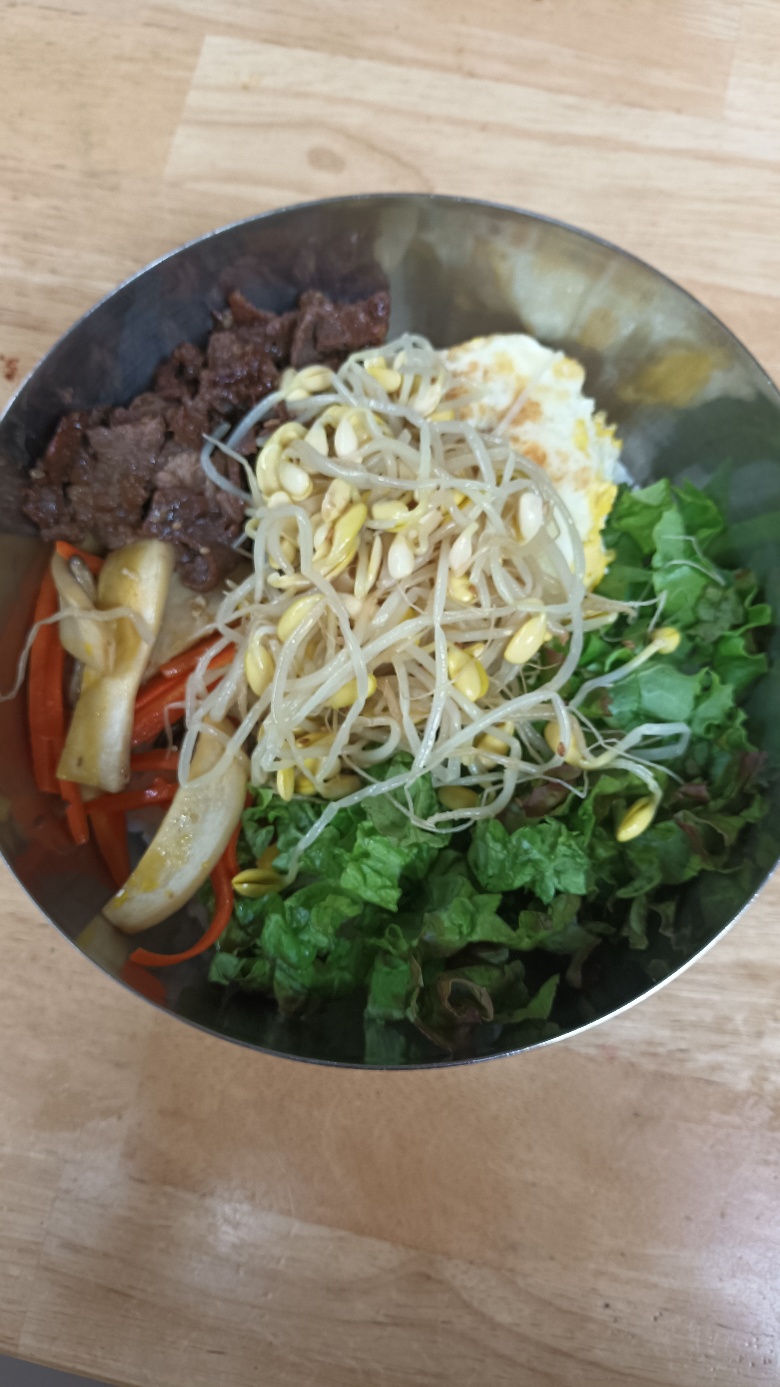
Bibimbap (Korean Style Mixed Rice)

Prep Time
10 minutes; longer if rice isn't premade.
Prep Notes
Bibimbap (비빔밥) is one of the most famous dishes to come out of Korea. This traditional dish can be made in a regular bowl or in a hot stone bowl to cook everything together. The beauty of this dish, however, is it's diversity and variety. There are no set ingredients or method to making bibimbap. As long as you've got a fridge full of vegetables, rice, and gochu jang (Korean chili paste); you can make this dish however you want! Try to get as many colours as possible and use seasonal vegetables to get the best bang for your buck!
In the credit section I've added a website that talks at length about the beauty of this meal. I've also attached some pictures from the internet to show the variety of this dish.


Cooking Time
5 minutes; longer if rice isn't premade
Yields
1
Ingredients
1 serving sticky rice such as glutenous white rice, brown rice, or Asian wild rice.
Vegetables of your choice: Some popular choices are carrots, Asian squash, bean sprouts, shiitake mushrooms, spinach, red bell peppers.
1 egg; fried with yolk whole, yolk broken, or raw. Your choice!
75g of thinly sliced or ground pork or beef (optional)
1 tbl gochu jang or other thick chili paste, plus more to taste
2 tsp sesame oil, plus more to taste
sesame or perilla seeds to garnish (optional)
Directions
- If you have pre-made rice, warm it up in the microwave. If not, make some according to the directions on the package.
- If using hard vegetables like carrots, squash or mushrooms, saute until soft but not browned. If using meat, you can saute meat at the same time.
- Fry the egg in a separate pan in the style you prefer. I prefer sunny-side up; my wife likes over medium; our daughter likes scrambled; my in-laws just throw in a raw egg at the end.
- Put the rice in a bowl with the gochu jang and sesame oil.
- Throw all the vegetables and meat on top. If you're trying to impress a guest, you can arrange them like the photos above but it's not necessary.
- Put the egg in the middle of the dish and serve.
- Have a bowl of gochu jang and sesame oil in the middle of the table for people to add if they want more, and instruct your guests to mash everything together with their utensils and mix thoroughly.
Notes
**Some vegetables to avoid: Tomatoes, garlic, eggplant, bitter lettuce, and red onion. I'm not sure why, but they just don't work.
**If you're using a stone bowl you can saute the vegetables and beef right in the bowl. Add the rice, paste and oil when done. Do NOT cook the egg in the bowl. Throw the egg on top at the end at the heat of the bowl will cook the egg whilst mixing.
**Don't be afraid to experiment with local, seasonal vegetables and spices. Make it your own! The beauty of this dish is that every house makes it different.
**Traditionally this is eaten with a combination of a spoon and chopsticks. It can be messy so having to use the spoon is NOT a slight against your chopstick ability!

